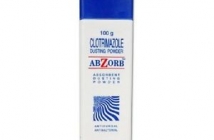Home / Categories / HELICLAR-500

HELICLAR-500
(10X10)
CLARITHROMYCIN-500MG
MACROLIDES, LINCOSAMIDE AND OTHERS
NOVA GENETICA PVT. LTD.
Product Details
Actions
Indications
Contraindications
Route/Dosage
Interactions
Lab Test Interferences
Adverse Reactions
PrecautionsPatient Care Considerations
Administration/Storage
Assessment/Interventions
Patient/Family Education
(kluh-RITH-row-MY-sin)BiaxinTablets: 250 mg, 500 mgGranules for oral suspension: 125 mg/5 mL after reconstitution, 250 mg/5 mL after reconstitutionClass: Antibiotic, Macrolide
 Actions Inhibits microbial protein synthesis.
Actions Inhibits microbial protein synthesis.
 Indications Treatment of infections of respiratory tract, skin and skin structure; treatment of disseminated atypical mycobacterial infections caused by susceptible strains of specific microorganisms. Prevention of disseminated Mycobacterium avium complex disease in patients with advanced HIV infection. Clarithromycin in combination with omeprazole is indicated for the treatment of patients with an active duodenal ulcer associated with Helicobacter pylori infection. CHILDREN: Acute otitis media.
Indications Treatment of infections of respiratory tract, skin and skin structure; treatment of disseminated atypical mycobacterial infections caused by susceptible strains of specific microorganisms. Prevention of disseminated Mycobacterium avium complex disease in patients with advanced HIV infection. Clarithromycin in combination with omeprazole is indicated for the treatment of patients with an active duodenal ulcer associated with Helicobacter pylori infection. CHILDREN: Acute otitis media.
 Contraindications Hypersensitivity to erythromycin or any macrolide antibiotic. Patients receiving terfenadine who have pre-existing cardiac abnormalities or electrolyte disturbances.
Contraindications Hypersensitivity to erythromycin or any macrolide antibiotic. Patients receiving terfenadine who have pre-existing cardiac abnormalities or electrolyte disturbances.
 Route/Dosage
Route/Dosage
Acute Maxillary Sinusitis
ADULTS: PO Extended-release two 500 mg tablets q 24 hr for 14 days.
Acute exacerbation of chronic bronchitis caused by H. influenzae, H. parainfluenzae, M. catarrhalis, S. pheumoniae
ADULTS: PO Extended-release two 500 mg tablets q 24 hr for 7 days.
Community-acquired pneumonia caused by C. pneumoniae, H. influenzae, H. parainfluenzae, M. catarrhalis, S. pheumoniae
ADULTS: PO Extended-release two 500 mg tablets q 24 hr for 7 days. ADULTS AND CHILDREN ³ 12 yr: PO 250 to 500 mg q 12 hr for 7 to 14 days; use 500 mg q 12 hr for prevention and treatment of mycobacterial infections. CHILDREN: PO 7.5 mg/kg q 12 hr for 10 days. Maximum dose for treatment and prevention of mycobacterial infections is 500 mg bid.
Active Duodenal Ulcer Associated with H. pylori Infection
ADULTS: PO 500 mg clarithromycin and 40 mg omeprazole tid for days 1 to 14 and omeprazole 20 mg daily for days 15 to 28.
 Interactions
Interactions
Benxodiazepines Metabolized by Oxidation (eg, Midazolam): Increased and prolonged CNS effects. Buspirone, Cilostazol, Corticosteroids (eg, Methylprednisolone): Plasma levels of buspirone may be elevated, increasing the pharmacologic and adverse effects. Carbamazepine: May increase blood level concentrations of carbamazepine; recommend monitoring levels. Cisapride, Pimozide: Elevated plasma levels of cisapride and increased risk of serious cardiotoxicity, including arrhythmias and death. Cyclosporine: Elevated cyclosporine levels with increased risk of toxicity. Digoxin: Elevated serum digoxin levels. Ergot Derivatives (eg, Ergotamine): The risk of acute ergtism (eg, peripheral ischemia) may be increased. HMG-CoA Reductase Inhibitors (eg, Lovastatin): Increased risk of myopathy and rhabdomyolysis. Rifamycins (eg, Rifabutin): Antimicrobial effects of clarithromycin may be decreased, while adverse effect of rifamycins may be increased. Tacrolimus: Increased plasma levels with increased risk of toxicity. Theophylline: May increase theophylline plasma concentration; recommend monitoring levels. Warfarin: The anticoagulant effect may be increased, increasing the risk of hemorrhage.
 Lab Test Interferences None well documented.
Lab Test Interferences None well documented.
 Adverse Reactions
Adverse Reactions
CARDIOVASCULAR: Ventricular arrhythmias. CNS: Headache; dizziness; insomnia; nightmares; vertigo. DERMATOLOGIC: Rash. EENT Hearing loss; tinnitus; abnormal sense of smell. GI: Diarrhea; nausea; vomiting; abnormal taste; dyspepsia; abdominal pain/discomfort; glossitis; stomatitis; oral moniliasis; vomiting. GU: Elevated BUN. HEMATOLOGIC: Elevated PT. HEPATIC: Hepatitis; jaundice. URTICARIA; hypersensitivity; anaphylaxis; Stevens-Johnson syndrome.
 Precautions
Precautions
Pregnancy: Category C. Lactation: Undetermined. Other drugs of this class are excreted in breast milk. CHILDREN: Safety and efficacy in children < 6 mo not established. CHILDREN: Indicated for use in children only for mycobacterial infections; safety in children < 20 mo not established. Pseudomembranous Colitis: Consider possibility in patients in whom diarrhea develops. Renal or Hepatic Impairment: Use cautiously and adjust dose in patients with severe renal impairment. No dosage adjustment necessary if patient has impaired hepatic function but normal renal function.
PATIENT CARE CONSIDERATIONS
 Administration/Storage
Administration/Storage
- Administer with full glass of water.
- Give drug at evenly spaced intervals.
- Do not store liquid preparation in refrigerator. Discard 14 days after reconstitution.
 Assessment/Interventions
Assessment/Interventions
- Obtain patient history, including drug history and any known allergies. Consider cross-sensitivity with other macrolides.
- Monitor serum levels of theophylline and carbamazepine, because clarithromycin may increase these drug levels.
- Notify health care provider if patient develops headache, abdominal pain, abnormal taste, diarrhea, nausea or vomiting.
OVERDOSAGE: SIGNS & SYMPTOMS Nausea, vomiting, diarrhea
 Patient/Family Education
Patient/Family Education
- Instruct patient not to take nonsedating antihistamines unless discussed with health care provider or pharmacist.
- Tell patient that if dose is missed not to double dose and to continue on schedule. If > 1 dose is missed, tell patient to contact health care provider.
- Instruct patient to report the following symptoms to health care provider: diarrhea, stomach pain.
Books@Ovid
Copyright © 2003 Facts and Comparisons
David S. Tatro
A to Z Drug Facts




